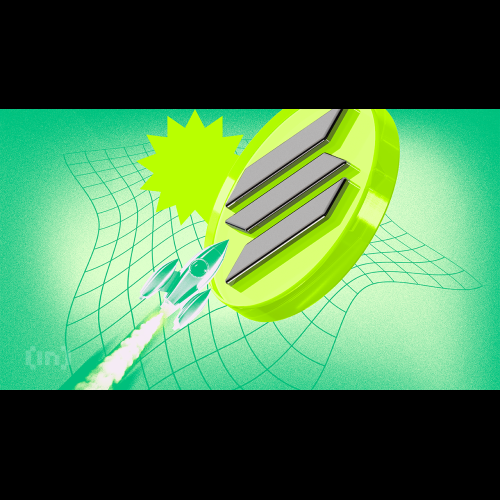
|
|

|
|

|
|

|
|

|
|

|
|

|
|

|
|

|
|

|
|

|
|

|
|

|
|

|
|

|
|
進化し続けるブロックチェーン技術の世界で、ビットコインとポルカドットは最も影響力のある 2 つのプレーヤーですが、仮想通貨の分野では明らかに異なる目的を果たしています。

Bitcoin and Polkadot are two influential cryptocurrencies with distinct purposes in the blockchain space.
ビットコインとポルカドットは、ブロックチェーン空間において明確な目的を持つ 2 つの影響力のある暗号通貨です。
Bitcoin, created in 2009, serves primarily as a store of value and medium of exchange. Its scarcity and adoption by institutional investors have contributed to its reputation as "digital gold." Bitcoin operates on a proof-of-work consensus mechanism, making it secure but energy-intensive and leading to slower transaction speeds and higher fees during periods of high demand. These limitations have shifted its use towards long-term value storage.
2009 年に作成されたビットコインは、主に価値の保存および交換媒体として機能します。その希少性と機関投資家による採用により、「デジタルゴールド」としての評判が高まりました。ビットコインはプルーフ・オブ・ワークのコンセンサス・メカニズムに基づいて動作するため、安全ではありますがエネルギーを大量に消費するため、需要が高い時期にはトランザクション速度が遅くなり、手数料が高くなります。これらの制限により、その使用は長期的な価値の保存に移行しました。
Polkadot, on the other hand, was launched in 2020 as a scalable and interoperable blockchain network. It connects various decentralized blockchains through its central relay chain, enabling them to communicate and share data. Unlike Bitcoin, Polkadot is designed to support multiple blockchains, known as parachains, in a multi-chain architecture.
一方、Polkadot は、スケーラブルで相互運用可能なブロックチェーン ネットワークとして 2020 年に開始されました。中央のリレーチェーンを通じてさまざまな分散型ブロックチェーンを接続し、データの通信と共有を可能にします。ビットコインとは異なり、Polkadot はマルチチェーン アーキテクチャでパラチェーンとして知られる複数のブロックチェーンをサポートするように設計されています。
This interoperability allows Polkadot to overcome the limitations of isolated blockchains and support a wider range of applications. Polkadot also utilizes parallel processing through parachains to enhance scalability, catering to the growing demand for decentralized applications (dApps) and decentralized finance (DeFi) services.
この相互運用性により、Polkadot は分離されたブロックチェーンの制限を克服し、より幅広いアプリケーションをサポートできるようになります。また、Polkadot はパラチェーンによる並列処理を利用してスケーラビリティを強化し、分散型アプリケーション (dApps) および分散型金融 (DeFi) サービスに対する需要の高まりに応えています。
To ensure efficient governance, staking, and bonding processes, Polkadot has its native token, DOT, which serves multiple functions. DOT holders can participate in voting on network upgrades and decisions, contributing to a decentralized and community-driven platform. Additionally, the staking mechanism encourages participation in securing the network, and bonding enables parachains to connect to the relay chain, expanding the network's capabilities.
効率的なガバナンス、ステーキング、ボンディングのプロセスを確保するために、Polkadot には複数の機能を提供するネイティブ トークン DOT があります。 DOT 保有者は、ネットワークのアップグレードと決定に関する投票に参加し、分散型のコミュニティ主導型プラットフォームに貢献できます。さらに、ステーキング メカニズムはネットワークのセキュリティ保護への参加を促進し、ボンディングによりパラチェーンがリレー チェーンに接続できるようになり、ネットワークの機能が拡張されます。
In summary, Bitcoin and Polkadot have different roles within the cryptocurrency ecosystem. While Bitcoin is known for its status as a store of value, Polkadot is positioned as a multi-chain platform for decentralized applications and services. Both platforms are set to continue co-existing and shaping the digital economy in their unique ways.
要約すると、ビットコインとポルカドットは、暗号通貨エコシステム内で異なる役割を持っています。ビットコインは価値の保存手段として知られていますが、ポルカドットは分散型アプリケーションとサービスのためのマルチチェーン プラットフォームとして位置付けられています。両方のプラットフォームは今後も共存し、独自の方法でデジタル経済を形成していく予定です。
免責事項:info@kdj.com
The information provided is not trading advice. kdj.com does not assume any responsibility for any investments made based on the information provided in this article. Cryptocurrencies are highly volatile and it is highly recommended that you invest with caution after thorough research!
If you believe that the content used on this website infringes your copyright, please contact us immediately (info@kdj.com) and we will delete it promptly.













































